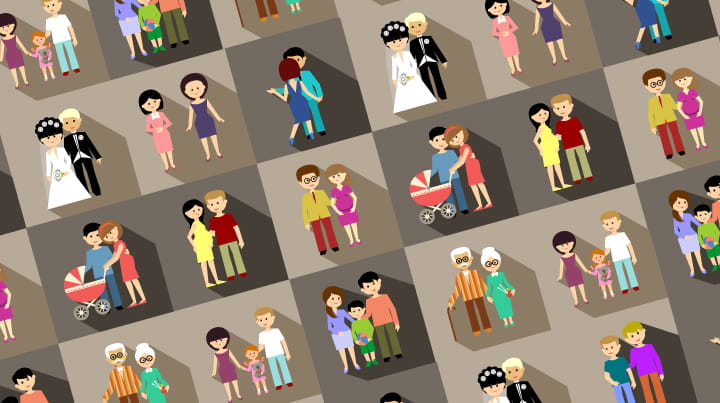 The study of families and households is one of the most popular topics at A-level. This area of study incorporates and draws on a range of topics that should be familiar to most students of Sociology, such as key sociological theories, like Functionalism, Marxism and Feminism. The family therefore provides a useful way of introducing (or applying existing knowledge of) key sociological theories to an area of life that all will have some concept or experience of.
The study of families and households is one of the most popular topics at A-level. This area of study incorporates and draws on a range of topics that should be familiar to most students of Sociology, such as key sociological theories, like Functionalism, Marxism and Feminism. The family therefore provides a useful way of introducing (or applying existing knowledge of) key sociological theories to an area of life that all will have some concept or experience of.Introduction to the family and different structures
All students should have an understanding, or experience of, what a ‘family’ is ⎯ though what that means to each of them may be very different. This subject area, particularly in recent years, has also been used by exam boards of a way of introducing the study of social policy and demographics, and hence, this provides a useful way of introducing topics that will become more relevant to students, should they choose to go on and study Sociology further at university level.
Another major advantage of studying this topic as part of an A-level (or similar) course is the plethora of material available on this subject – students should be encouraged as always to read widely and should see examples and applications of its content in the media almost daily. Here we begin with resources on the family and different structures, focusing on the sociological family tree, families in different countries, what is a family? andthe sociology of living alone. Next we look at resources on the family and industrialisation. Here we offer help on the family and industrialisation flash cards and the industrialisation timeline. This area then offers material on sociological perspectives on the family, including Functionalism, Feminism and looks at Marxism using The Walking Dead. The household division of labour is considered by looking at first, the social construction of gender roles, thenstrategies which men use to avoid housework, and motherhood role expectations. Marriage, cohabitation and divorce is considered by looking at commitment ceremonies, the estrangement of marriage and family, the social stigma of second marriages, attitudes towards sex before marriage, and we ask how important is marriage? Finally here we look at childbearing, child-rearing and childhood, by critiquing the idea of the ‘artificial’ families, we look at approaches to mothering, child-bearing trends, takea cross-cultural look at childhood, look at depicting demographics through Pinterest, consider marrying for love, and finally, look at laws around assisted reproduction.

Students should be able to draw on examples from a wide range of subcultures, both classic and...

A useful overview of the Functionalist view of youth culture can be found below:

Students could be asked to write a timeline of their lives as they anticipate them to be after...

Kirsty Grocott’s article in the Daily Telegraph:

The Centre for Contemporary Cultural Studies (CCCS) based at Birmingham University produced a ...

Some Sociologists suggest that subcultures may no longer exist in the form that they once did. Fo...

The following Daily Mail article laments the adoption of Jamaican patois styles of language in...

By way of starting off an investigation into youth subcultures, teachers could pose the proble...

David Starkey featured in a Newsnight discussion about the 2011 UK riots. This Guardian articl...

The class could investigate and consider the extent to which they consider the ‘haul girl&r...

We begin here by looking at ‘what is youth?’, and then the idea of youth-subcultures